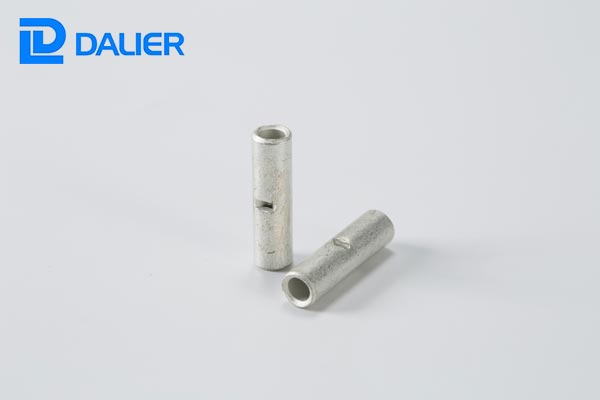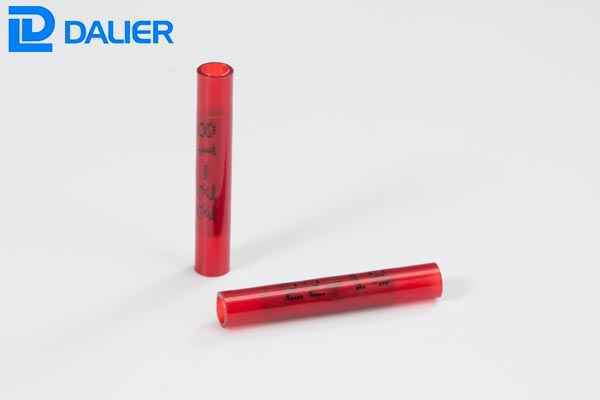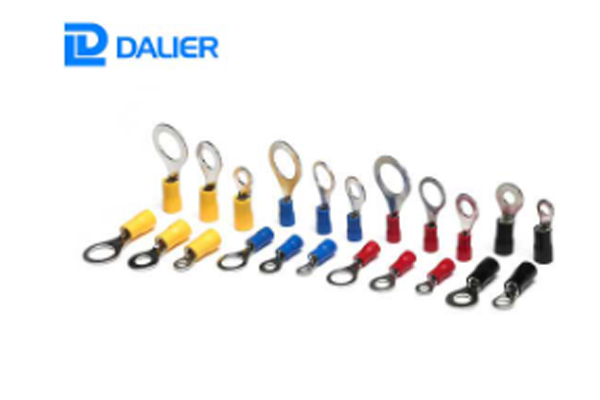Things to Know About Butt Splice Connectors
Butt splice connectors are fundamental components in the world of electrical wiring. They provide a simple, reliable, and often insulated way to join two wires end-to-end, creating a continuous electrical path. Whether you're repairing a damaged cable, extending a wire run, or working on automotive, marine, or home electrical projects, understanding butt splices is crucial. Let's dive into the essentials.
1. What are Butt Splices?
Core Function: Their primary purpose is to permanently join two pieces of wire together in a straight line (end-to-end).
Structure: A typical butt splice consists of a metal barrel (usually copper or tin-plated copper for conductivity and corrosion resistance) enclosed within an insulating sleeve (often plastic like nylon or vinyl, or heat-shrink tubing).
Mechanism: The connection is made by inserting the stripped ends of the wires into opposite ends of the metal barrel. The barrel is then crimped (compressed) using a specialized tool. This crimping action deforms the metal barrel tightly around the wire strands, creating a secure mechanical and electrical bond. The insulating sleeve protects the connection from short circuits, environmental factors (moisture, chemicals), and physical damage.
Key Benefit: They create a strong, insulated, and protected joint without the need for soldering (though soldered versions exist).
2. Types of Butt Splices
Seamless butt splice, one-piece seamless structure, accurately achieves close docking of wires, low contact resistance ensures efficient conductivity, adapts to cables of multiple specifications, and provides stable and reliable connections, providing durable solutions for power, electrical wiring and other scenarios.

Nylon insulated butt splices are higher quality wire connectors used to extend, repair, or change an electrical circuit. The butt splice is made from tinned copper for high conductivity and is wrapped in a semi-transparent nylon insulation that holds up to higher temperatures and crimps better than vinyl insulated butt splices. Nylon butt splices are perfect for use in automotive electrical systems, as well as other electrical applications including marine and higher voltage systems.

vinyl-butt-splice is suitable for various application scenarios. It is specifically designed to splice solid wires or stranded wires, enabling the repair or lengthening of wires. The internal wire stop device of the vinyl butt splice ensures that the wires are inserted into the terminal barrel with an appropriate length. Thanks to its in-line mounting method, it is easy to install. The contacts of the vinyl butt splice are made of tin-plated copper, which can ensure reliable electrical conductivity.

The step-down nylon butt splice adopts a compression-type electrical connection design, which can safely connect multi-conductor cables, and supports seamless splicing of stranded wires and solid wires. The connector uses the standard color coding of the American Wire Gauge (AWG), making it easy for installation and identification. Meanwhile, it is available in both insulated and non-insulated versions to meet different application requirements.

3. How to Choose the Right Butt Splice
Selecting the correct connector is vital for safety and performance:
Wire Gauge: MOST CRITICAL. The splice must be rated for the gauge (AWG size) of the wires you are joining. Using a splice too large will result in a poor crimp; using one too small won't fit the wires. Splices are clearly labeled with their gauge range (e.g., "22-18 AWG", "16-14 AWG", "12-10 AWG").
Red is for 18-22 gauge wire, Blue is for 14-16 gauge wire, and Yellow is for 10-12 gauge wires.
Insulation Type:
Environment: Is it dry? Damp? Wet? Exposed to chemicals/oils? Heat? Vibration? Choose pre-insulated for dry interiors, heat-shrink for moisture/harsh conditions.
Protection Level Needed: Does the connection need to be waterproof? Highly resistant to abrasion? Heat-shrink offers the best overall protection and sealing.
Material:
Barrel: Copper is standard. Tin-plated copper offers better corrosion resistance. Ensure compatibility if joining different metals (e.g., copper to aluminum - use specialized connectors).
Insulation: Look for durable plastics (nylon, vinyl) or quality heat-shrink material.
Application Standards: Does your project need to meet specific standards (e.g., automotive SAE, marine UL, electrical NEC)? Choose connectors certified for that use.
Voltage & Current Rating: Ensure the splice's ratings exceed the circuit's requirements (usually not an issue for common low-voltage applications if sized correctly, but always verify).
4. Connecting Wires to the Butt Splice Connector
a. Prepare the wire: Strip off the insulation layer (length ≈ metal tube depth), check whether the wire core is intact.
b. Insert the connector: Insert the double wire pair into the middle of the metal tube, and the insulation layer must not enter the metal tube.
c. Crimp operation: Use special crimping pliers, the crimping point is located in the middle of the metal tube, and pull hard after crimping to test.
d. Heat shrink treatment (heat shrink type only): Heat with a hot air gun and observe the sealant seepage.
Conclusion
Butt splice connectors are indispensable for creating safe, durable, and protected electrical connections. By understanding the different types, carefully selecting the right splice for your wire gauge and environment, and mastering the proper crimping technique (especially with a dedicated tool), you ensure your electrical projects are built to last and perform reliably. Whether you're fixing a broken lamp cord or wiring a boat, the humble butt splice is a key player in your electrical toolkit. Always prioritize safety and choose quality connectors!
FAQ
Q: Can I reuse a butt splice connector?
A: No. Crimping permanently deforms the metal barrel. Attempting to reuse one will result in a weak, unreliable connection. Always use a new splice.
Q: Can I use electrical tape instead of a butt splice?
A: Absolutely not for a permanent, reliable connection. Twisting wires and taping is unsafe. Tape deteriorates, provides poor insulation, no strain relief, and can unravel, leading to shorts or fires. Always use proper connectors.
Q: Can I crimp without a proper crimping tool?
A: Strongly discouraged. Pliers, hammers, or vises cannot create the controlled, high-pressure crimp needed for a reliable, gas-tight connection. They often damage the connector or wire. Invest in a proper ratcheting crimper for safety and reliability.




